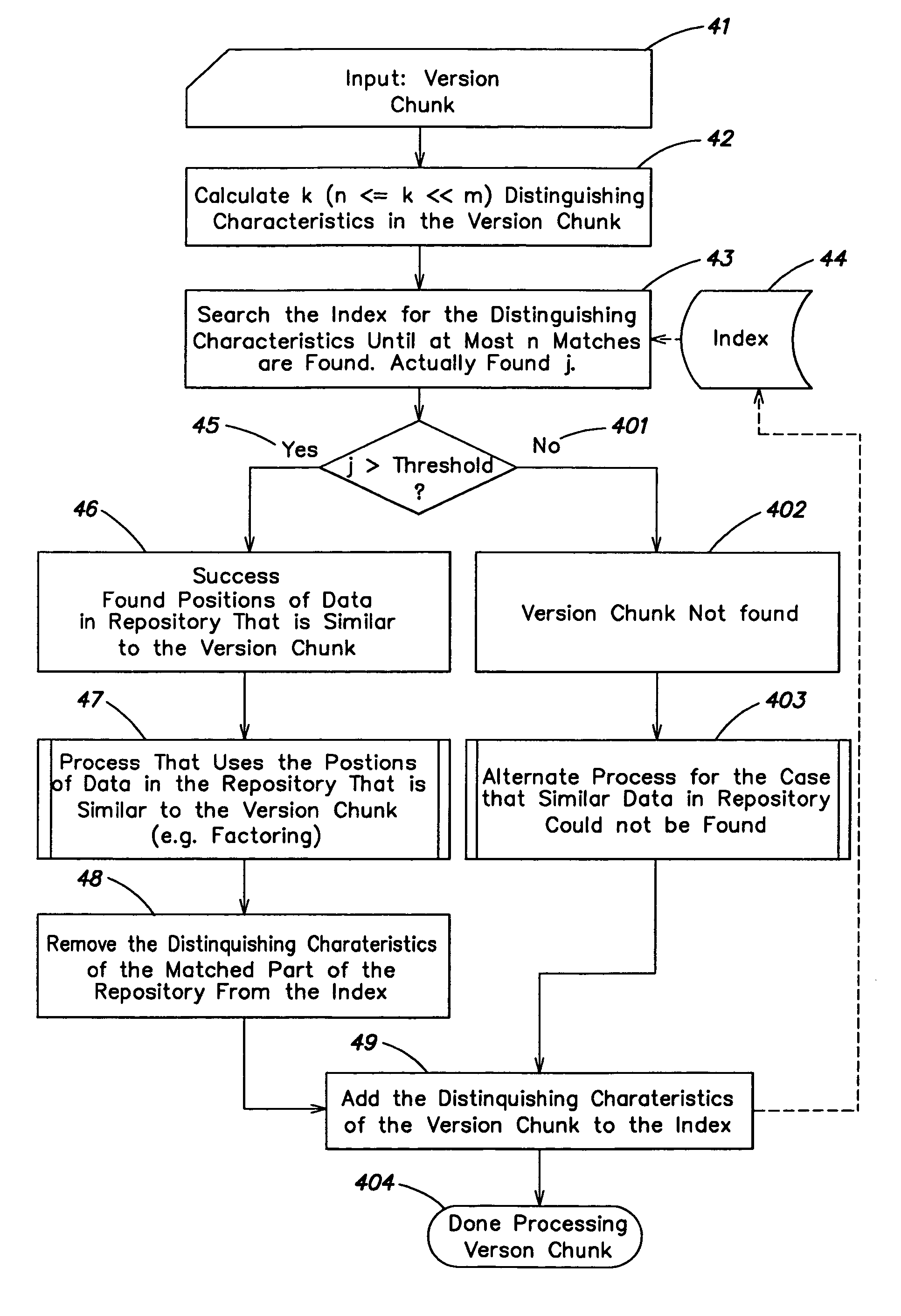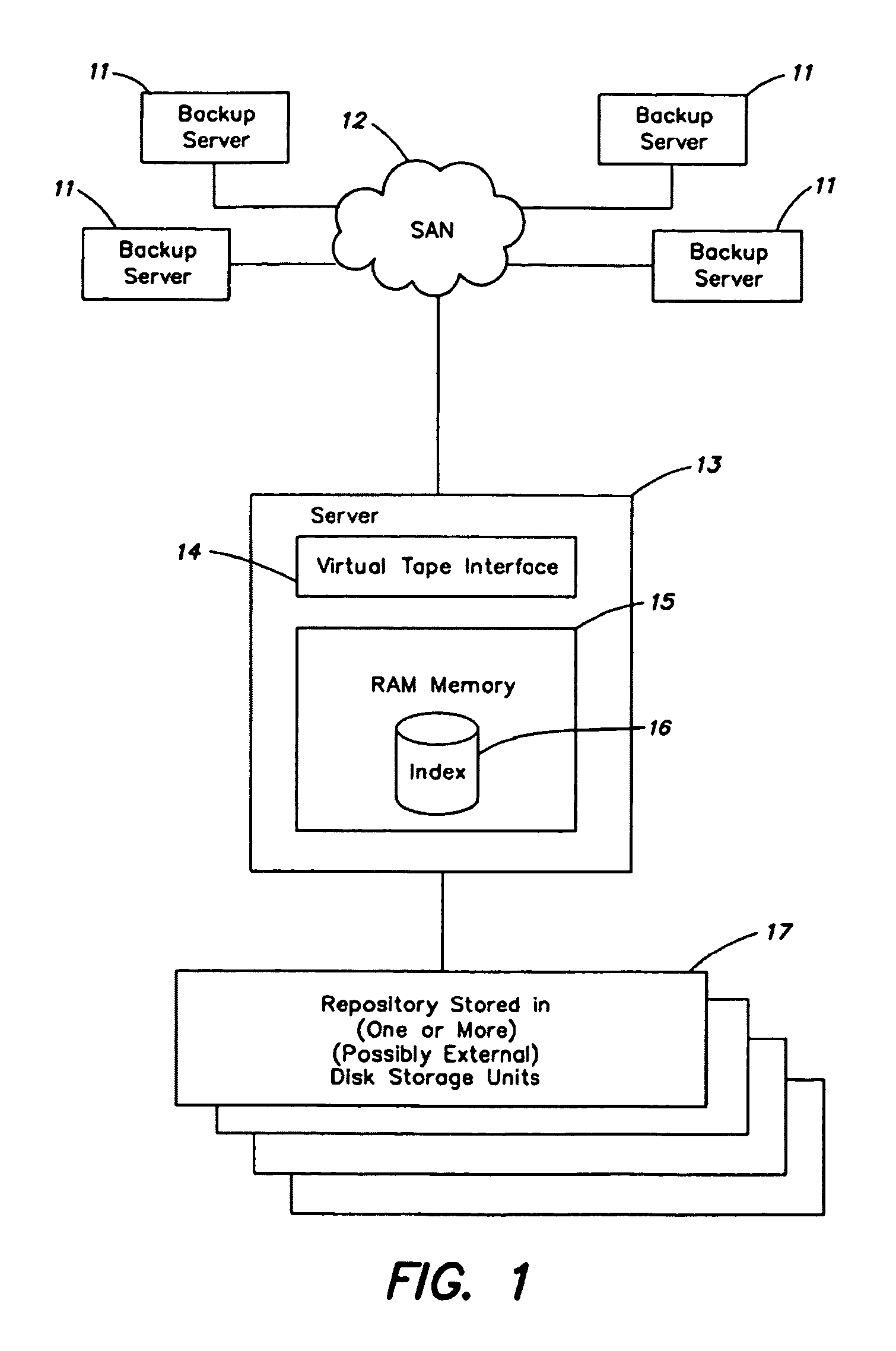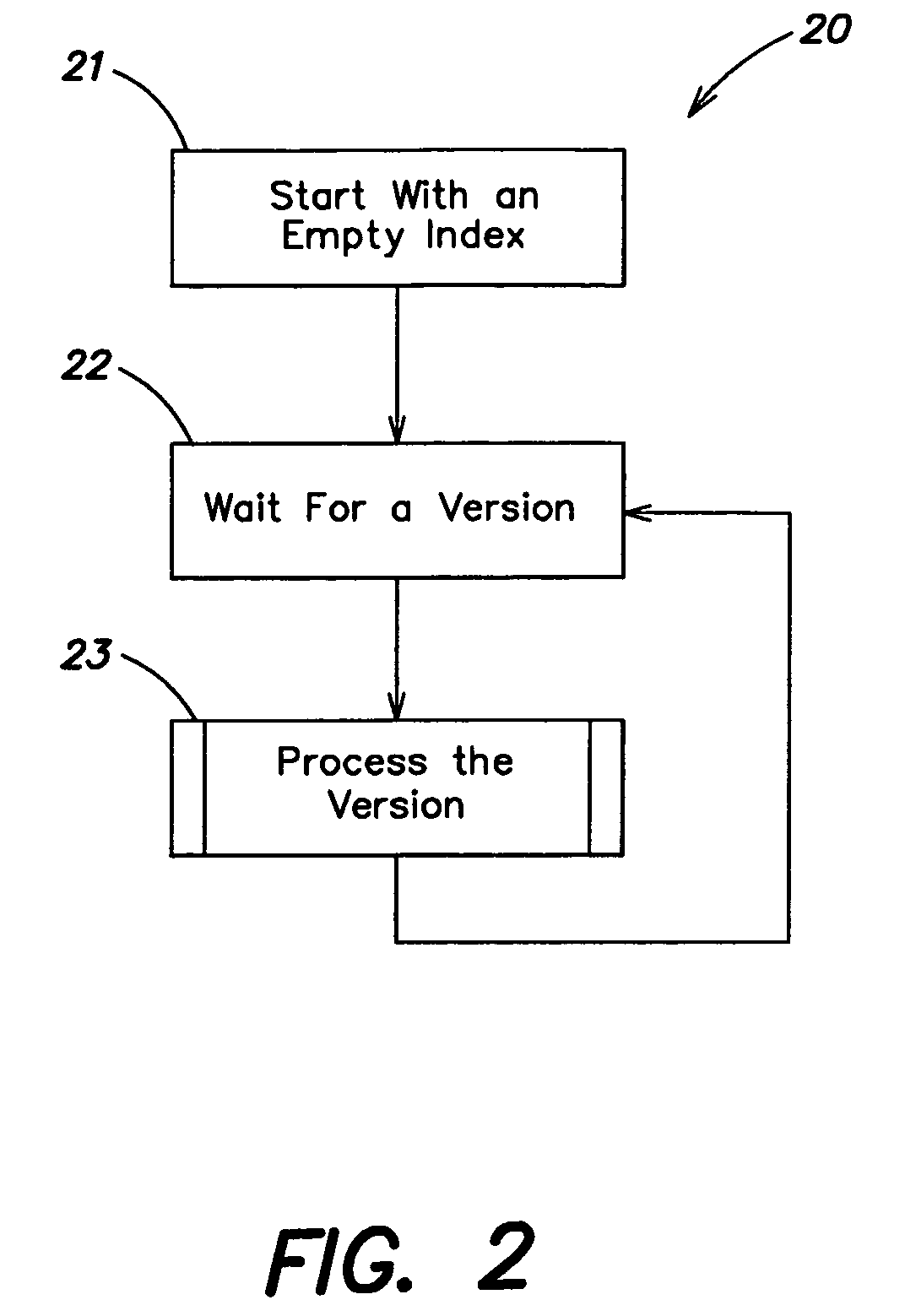Systems and methods for searching of storage data with reduced bandwidth requirements
a technology of storage data and search system, applied in error detection/correction, instruments, computing, etc., can solve the problems of not being scalable beyond some restrictive limit, affecting and not being able to find localized data changes. , to achieve the effect of reducing the amount of data transmitted between systems
- Summary
- Abstract
- Description
- Claims
- Application Information
AI Technical Summary
Benefits of technology
Problems solved by technology
Method used
Image
Examples
example 1
Step 1: Build the Index for the Repository
[0114]This example uses the following repository string: “Begin-at-the-beginning-and-go-on-till-you-come-to-the-end;-then-stop.” Note that this step is a by-product of previous iterations of the algorithm. It is included here explicitly for clarity of the example.
Step 1a: Calculate the Hashes
[0115]The example uses a rolling hash function to calculate the hash values at every byte offset. It uses a modular hash function, which utilizes, for the sake of illustration, the prime number 8388593; the hash function used is h(X)=X mod 8388593. In this example, the seed size is 8 bytes. Input string “Begin-at-the-beginning-and-go-on-till-you-come-to-the-end;-then-stop.”
[0116]Calculated Hash Values:
[0117]
pos'nsubstringhash value0Begin-at26319221egin-at-21533762gin-at-t46844573in-at-th61950224n-at-the64998835-at-the-77356486at-the-b06146637t-the-be60867818-the-beg10712299the-begi579637810he-begin222540511e-beginn555994212-beginni435167013beginnin672997...
PUM
 Login to View More
Login to View More Abstract
Description
Claims
Application Information
 Login to View More
Login to View More - R&D
- Intellectual Property
- Life Sciences
- Materials
- Tech Scout
- Unparalleled Data Quality
- Higher Quality Content
- 60% Fewer Hallucinations
Browse by: Latest US Patents, China's latest patents, Technical Efficacy Thesaurus, Application Domain, Technology Topic, Popular Technical Reports.
© 2025 PatSnap. All rights reserved.Legal|Privacy policy|Modern Slavery Act Transparency Statement|Sitemap|About US| Contact US: help@patsnap.com



